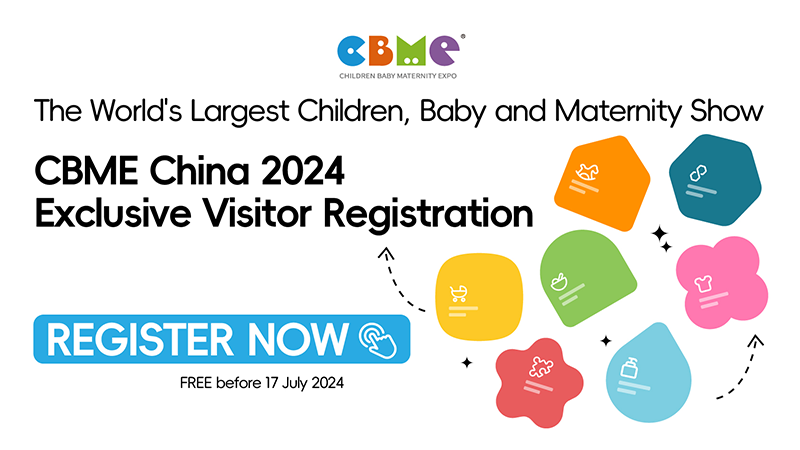As the macroeconomic environment continues to evolve rapidly, consumer behavior in China’s maternity and baby sector is undergoing a significant shift. In 2024, amidst widespread discussions of consumer downgrading, new mental models are emerging in how consumers approach the choice of maternity and baby products. Zhang Bin, President of Digital 100, addressed these changes at the 2024 CBME Pregnancy, Baby & Children Industry Summit, where he outlined the key growth drivers in the market. According to Zhang Bin, the two pivotal trends shaping the market are “quality” and “rationality”. These keywords not only characterize today’s consumers but also highlight where the industry’s growth potential lies.
Trend 1: Quality Parenting

Quality parenting is becoming an essential factor influencing the buying decisions of Chinese consumers. Parents today demand more than just trusted brands—they seek professional knowledge, diversified consumption categories, and distinctive, value-added services.
1.1 Ingredient-Focused Consumers
One of the most significant developments in the quality-focused trend is the rise of ingredient-focused consumers. According to Zhang Bin, more than 30% of mothers today identify themselves as ingredient-conscious. Gone are the days when big brands automatically signified quality. Today’s mothers are doing their research and becoming well-versed in product ingredients. Products that fail to display clear, understandable ingredient lists risk being dismissed at first glance.
For brands, this shift presents a significant opportunity to differentiate their offerings by emphasizing ingredient transparency and product efficacy. Clear communication of product features, such as “lactoferrin for immune support” or “gentian root for skin health,” resonates deeply with modern consumers, who are increasingly willing to pay a premium for products they perceive as safe, simple, and effective.
1.2 Targeted Functional Products
Another defining aspect of quality parenting is the shift from multi-functional to targeted, precision products. Where once parents sought all-in-one solutions, they now favor products that meet specific needs. This change reflects a broader move toward more personalized and focused approaches to parenting and child care.
1.3 The Power of a Good Story: Communicating Special Ingredients
Special ingredients that differentiate products are becoming a crucial point of interest for parents. These include niche elements like hydrolyzed whey protein, which enhances nutrient absorption and reduces digestive heatiness. The story behind these ingredients, such as sourcing from the 47° North latitude, where milk is renowned for its purity, helps create a compelling narrative that consumers buy into.
Successful brands today must not only feature high-quality ingredients but also master the art of ingredient storytelling, showcasing the benefits and the science behind their product formulations. This level of transparency and education strengthens consumer trust, which can foster brand loyalty.
1.4 Children as Decision-Makers
The shift towards more equal parenting styles is another critical trend. More than 61% of parents now practice encouragement-based parenting, where children’s input is valued. Children today have more influence over family purchasing decisions, particularly in categories such as clothing, shoes, stationery, and personal care products. This growing involvement has created space for IP collaborations and child-friendly versions of adult products, where children’s preferences for specific cartoon characters or design aesthetics come into play.
Brands that succeed in giving children a voice in decision-making processes are tapping into a rapidly growing market segment. From outdoor gear to beauty products like eyeshadows and nail polish, children’s demand for adult-like products is expanding, creating new opportunities for brands to innovate and diversify their offerings.
1.5 Distinctive, Value-Added Services
In the realm of services, consumers are increasingly seeking value-added offerings that go beyond basic product satisfaction. Services like size-exchange guarantees, stockpiling convenience, and hassle-free returns have become standard. Brands that can provide personalized, exclusive memberships and special privileges stand out in today’s crowded marketplace. Today’s parents are not just looking for products; they want a seamless, premium shopping experience.
Trend 2: Rational Parenting
While quality parenting focuses on improving product and service standards, rational parenting emphasizes more calculated and thoughtful purchasing behaviors. Parents today pride themselves on their rationality, reflecting broader changes in the way they approach consumption.
2.1 Choosing the Right Fit Over Big Brands
Parents are no longer solely loyal to large, well-known brands. Instead, they focus on finding products that meet their families’ specific needs. Rational parenting represents a move away from bulk purchases and toward smaller, more deliberate buying decisions, where consumers increasingly prioritize fit, quantity, and price over brand reputation alone.
For brands, this means that demonstrating value and relevance to individual family dynamics is critical. It also underscores the importance of flexible product lines that cater to niche markets.
2.2 Small-Package, Trial-Friendly Products
Another facet of rational consumption is the demand for small-packaged, trial-friendly products. In the past, consumers gravitated toward bulk buying, but today’s parents prefer smaller, more portable goods that allow them to test products before committing to larger quantities. This shift is particularly pronounced in categories like complementary foods and nutritional supplements.
Brands that offer sample sizes and subscription-based models can tap into this trial-first mindset, providing parents the chance to experience a product’s benefits before committing to a full purchase.
2.3 Multi-Channel Price Comparisons
In today’s world of abundant online shopping options, consumers engage in thorough multi-channel price comparisons before making a purchase. Price is no longer the sole factor in this process—experience, scenario-fit, and product variety all play a role. Brands that can position themselves effectively across multiple channels and provide a seamless, value-driven customer experience will win the favor of rational, comparison-focused consumers.
Seizing Opportunities in the Maternity and Baby Market
The maternity and baby market in China is experiencing a pivotal transformation driven by the twin trends of quality and rationality. As parents become more educated, discerning, and strategic in their buying decisions, brands must adapt by providing ingredient transparency, functional precision, compelling storytelling, and unique, value-added services.
Moreover, tapping into the growing influence of children in family purchasing decisions, as well as offering trial-friendly, flexible purchasing options, will be key to unlocking growth in this rapidly evolving market. For brands ready to innovate and engage with this new breed of consumer, the growth potential is immense.
Keywords:
- CBME 2024 kids’ fashion showcase
- CBME 2024 baby nutrition and health
- CBME 2024 stroller and car seat safety
- 2024 Maternity and Baby Market Trends and Growth






